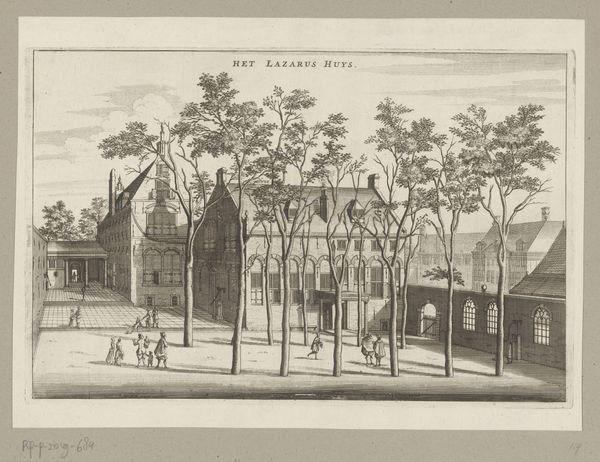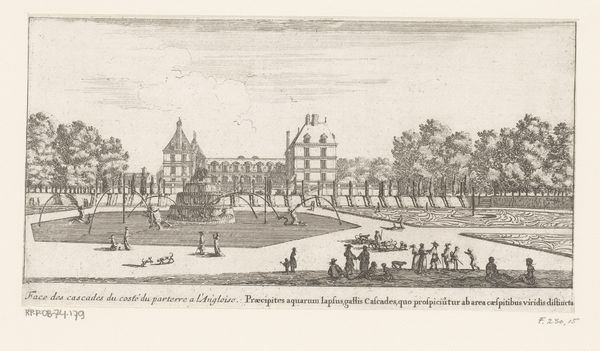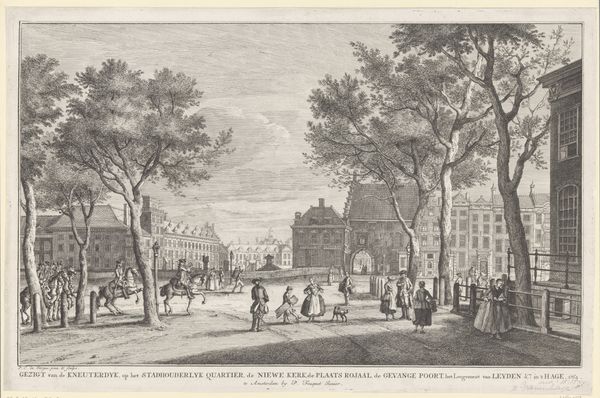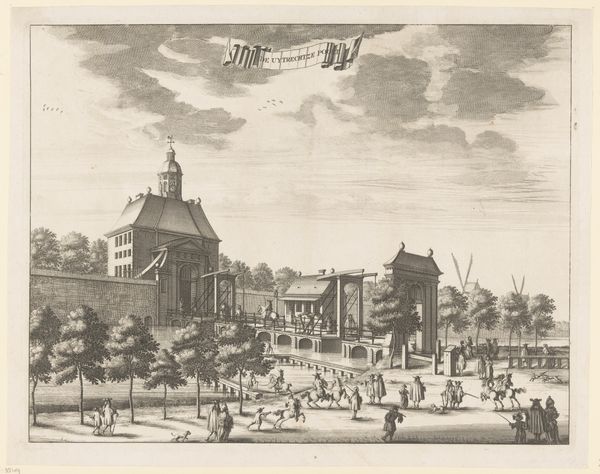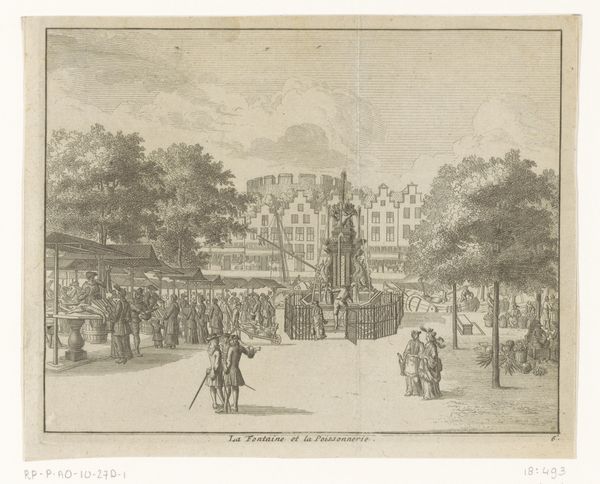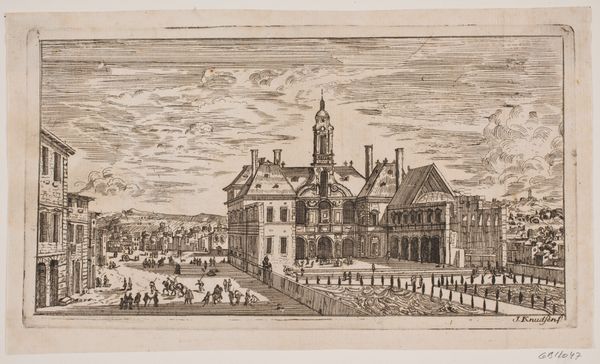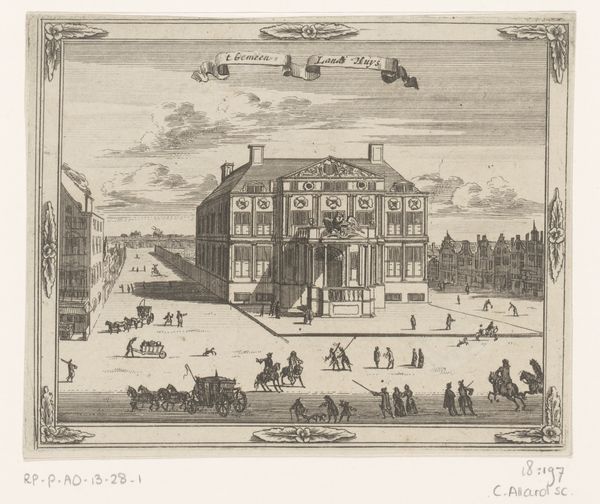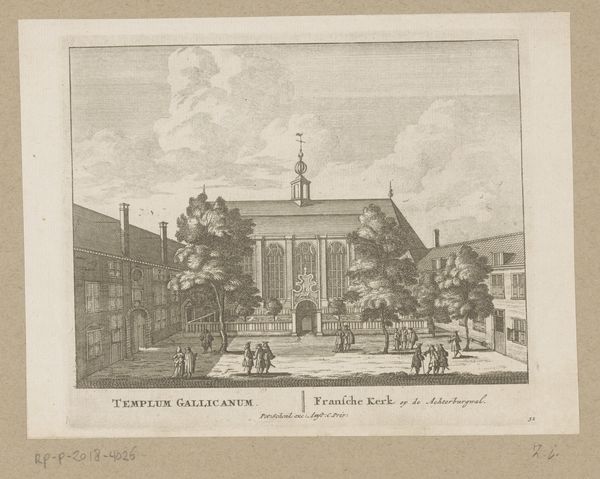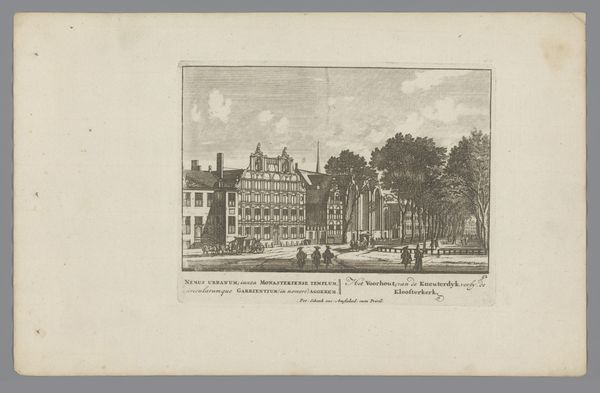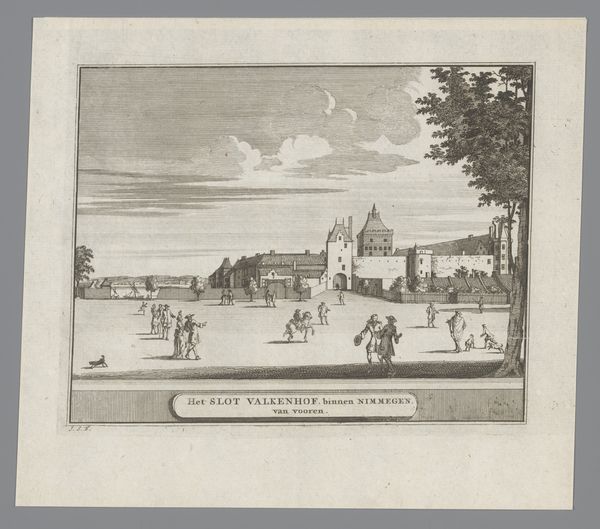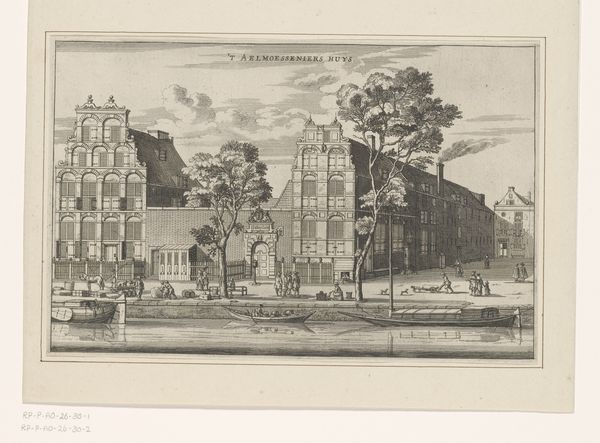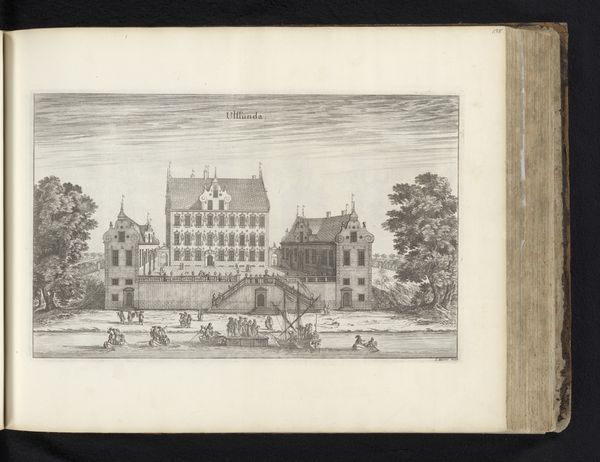
print, etching, engraving
#
dutch-golden-age
# print
#
etching
#
landscape
#
cityscape
#
genre-painting
#
engraving
Dimensions: height 123 mm, width 159 mm
Copyright: Rijks Museum: Open Domain
Curator: Here we have an etching from 1693 entitled "Gezicht op het Leprozenhuis te Amsterdam," which translates to "View of the Leper House in Amsterdam." It's currently held at the Rijksmuseum. Editor: Immediately, I’m struck by the overwhelming sense of isolation. Despite the presence of figures, the atmosphere feels intensely somber and detached, as if a veil separates them from the viewer. The composition almost emphasizes that through the framing effect of the architecture itself. Curator: I notice that the use of line, particularly in the trees and buildings, creates a strong sense of perspective, drawing the eye into the space of the courtyard. The precision of the engraving highlights architectural detail, particularly the rhythm of the arches and fenestration. Editor: And consider the context! Leper houses, or lazarettos, were sites of social exclusion and marginalization. The print depicts the relationship between health and social standing, offering a visual statement on 17th-century attitudes toward illness and difference. Each figure seems suspended, caught in a moment between diagnosis and community exclusion. Curator: The artist employs a delicate balance of light and shadow, wouldn't you say? This effect sculpts forms and also creates spatial depth in the etching, notice how they rendered this by using darker shading to indicate depth behind forms? The tonal range here is quite impressive, particularly given the graphic medium. Editor: Definitely. And what does that shadowing accomplish? It hints at something hidden beneath the surface of this scene. Those shadowed spaces aren't merely aesthetic flourishes but indicators of hidden pain, suffering, the deliberate 'othering' that constructs these isolated spaces. I think what strikes me is how relevant the idea of systemic exclusion remains today. Curator: Certainly. Although I find the etching's balanced composition and clear lines particularly compelling. The formal organization of the pictorial space leads to interesting intellectual interpretations. Editor: Absolutely, and situating that organization within the societal ills that are mirrored there only serves to illuminate this historical space’s continuing presence in modern issues of discrimination. Curator: A most poignant thought.
Comments
No comments
Be the first to comment and join the conversation on the ultimate creative platform.
